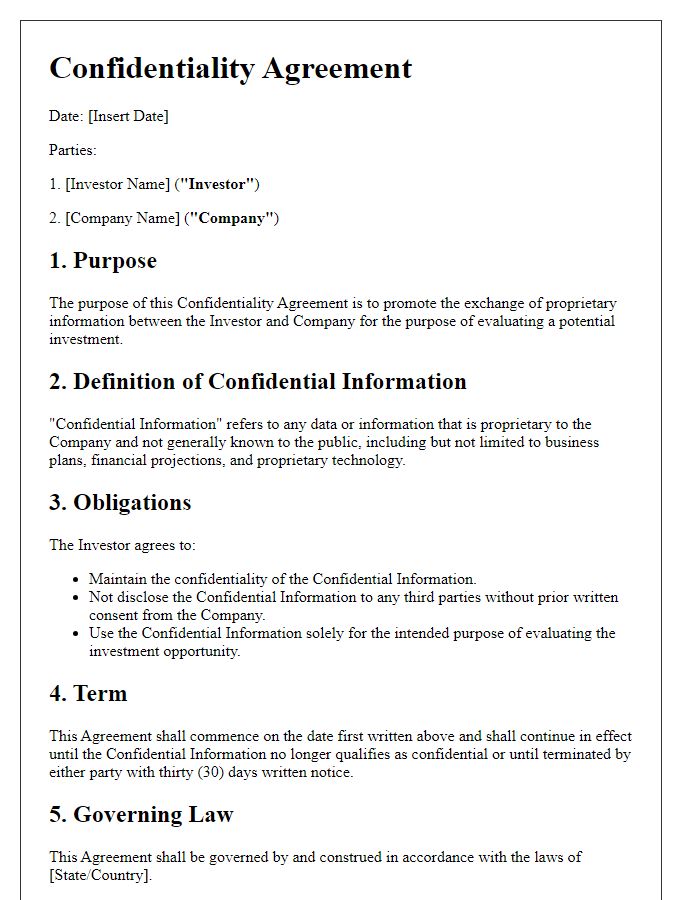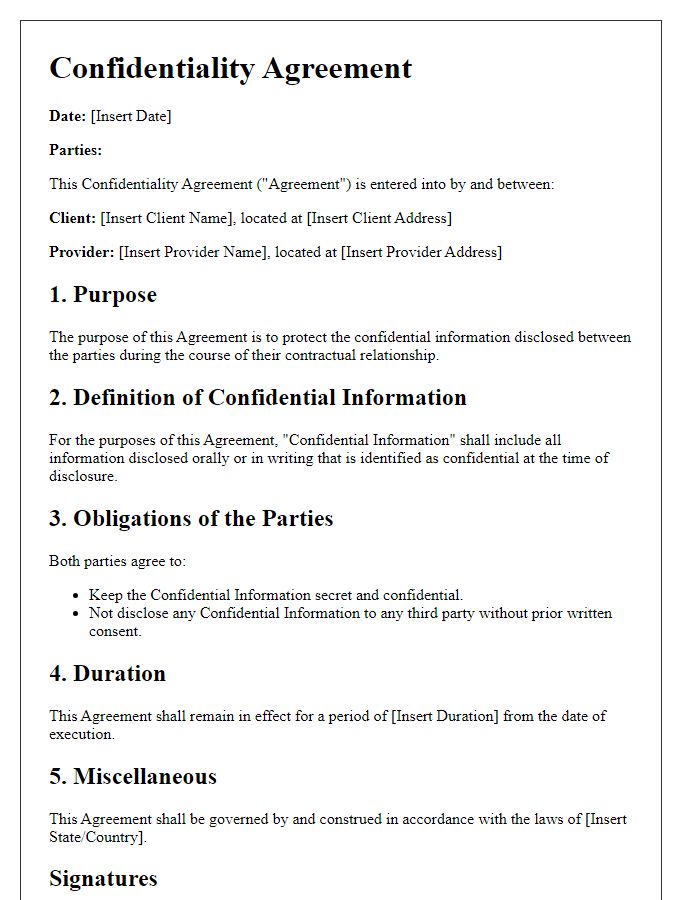In today's fast-paced business world, protecting sensitive information is more crucial than ever. A well-drafted confidentiality agreement serves as a solid foundation for trust between parties while safeguarding proprietary knowledge. Whether you're a startup sharing your innovative ideas or an established company disclosing trade secrets, clarity in your legal documents is key. Curious about how to create the perfect confidentiality agreement? Keep reading to learn more!

Title and Introduction
A confidentiality agreement, often referred to as a non-disclosure agreement (NDA), is a legally binding contract that establishes a confidential relationship between parties. This document is essential in protecting sensitive information shared during business negotiations, partnerships, or employment. Key elements include the definitions of confidential information, obligations of the receiving party, and the duration of confidentiality. The agreement aims to prevent unauthorized disclosure of proprietary information, trade secrets, or any sensitive data unique to a business. Establishing clear terms in this agreement is crucial to safeguarding intellectual property and maintaining competitive advantage in the marketplace.
Definition of Confidential Information
Confidential information refers to sensitive data or proprietary knowledge not publicly disclosed. This may include trade secrets, business strategies, financial records, customer lists, intellectual property, and proprietary technologies specific to a company, such as software algorithms or manufacturing processes. Confidential information also covers unpublished research and development findings, legal documents, or any correspondence marked confidential. Further, it encompasses personal identifiers of individuals involved in any business transactions or contracts, ensuring that all shared information remains secure and protected against unauthorized access or disclosure.
Obligations of the Receiving Party
In a confidentiality agreement, the obligations of the receiving party are crucial to ensure that sensitive information remains protected. The receiving party must acknowledge and agree not to disclose any confidential information, which may include trade secrets, proprietary data, and strategic plans, to unauthorized third parties. They must also ensure that any employees or contractors privy to this information understand and adhere to the confidentiality requirements. Implementing reasonable security measures to protect this information from unauthorized access or use is essential. Additionally, upon termination of the agreement, the receiving party should return or destroy all confidential materials, ensuring that no copies are retained, to uphold the integrity of the agreement and protect the disclosing party's interests.
Exclusions from Confidentiality
Confidentiality agreements, commonly referred to as non-disclosure agreements (NDAs), often stipulate exclusions that outline circumstances under which confidential information may not be considered confidential. Excluded information typically includes publicly available knowledge, such as data released before the agreement or information disclosed by a third party without breach of confidentiality. Additionally, if the receiving party independently developed the information without reference to the disclosed materials, this can also fall outside protected parameters. Legal requirements or government orders may compel the disclosure of confidential information, creating exceptions under the agreement. These exclusions ensure that neither party becomes unjustly restricted in their operations or legal obligations while maintaining the fundamental purpose of confidentiality.
Duration and Termination
The duration of the confidentiality agreement typically spans from the date of signing until a specified period, commonly three to five years, or until the confidential information is no longer deemed sensitive, whichever comes first. Termination can occur under conditions such as mutual consent, breach of agreement, or the completion of the specific project or transaction that necessitated the confidentiality. Furthermore, upon termination, obligations regarding the protection and non-disclosure of the confidential information may continue indefinitely, ensuring that sensitive data remains protected beyond the duration of the agreement. Additional consideration should be given to legal implications, such as jurisdiction and enforcement within specific legal frameworks, which can influence the overall efficacy of the confidentiality terms outlined in the agreement.













Comments